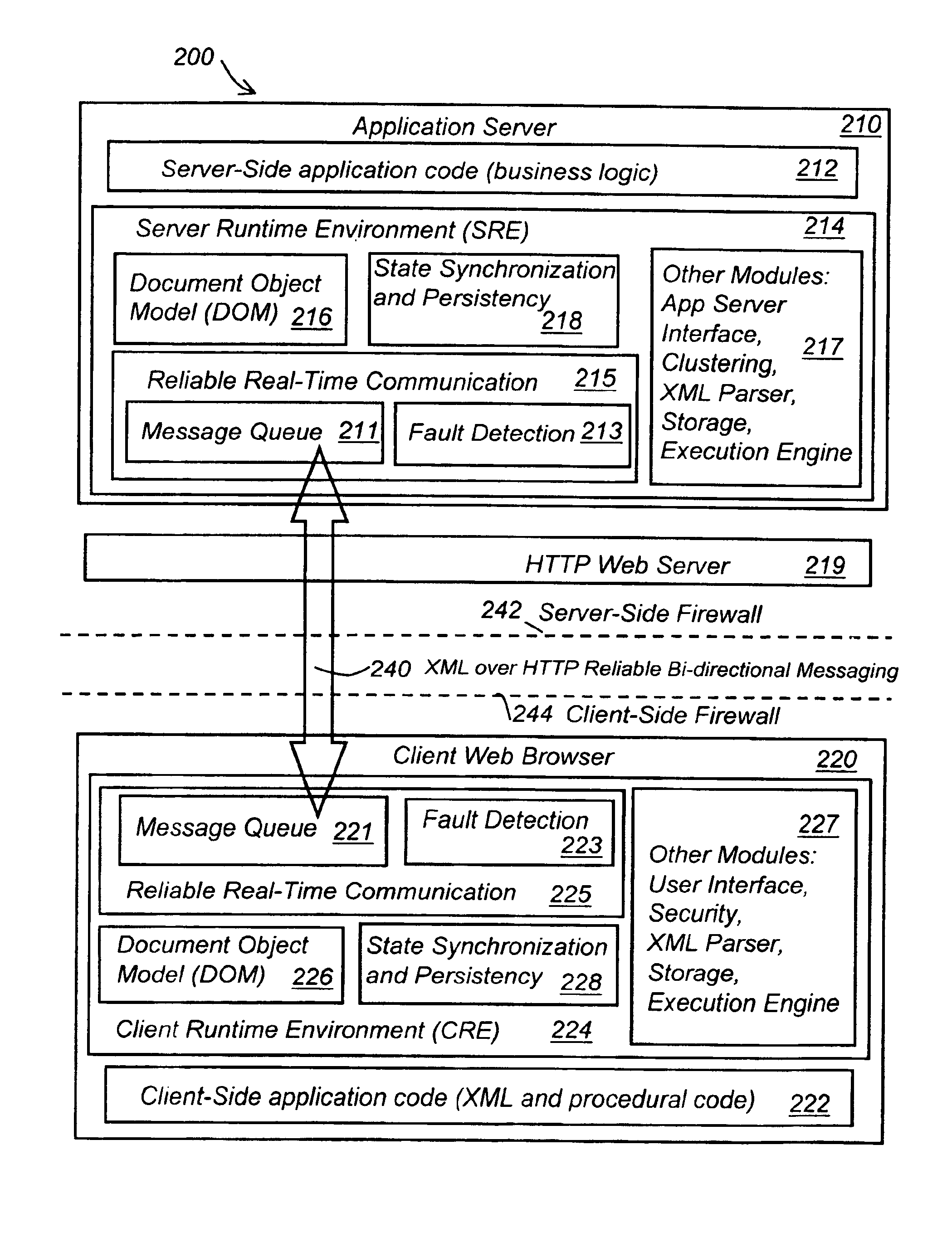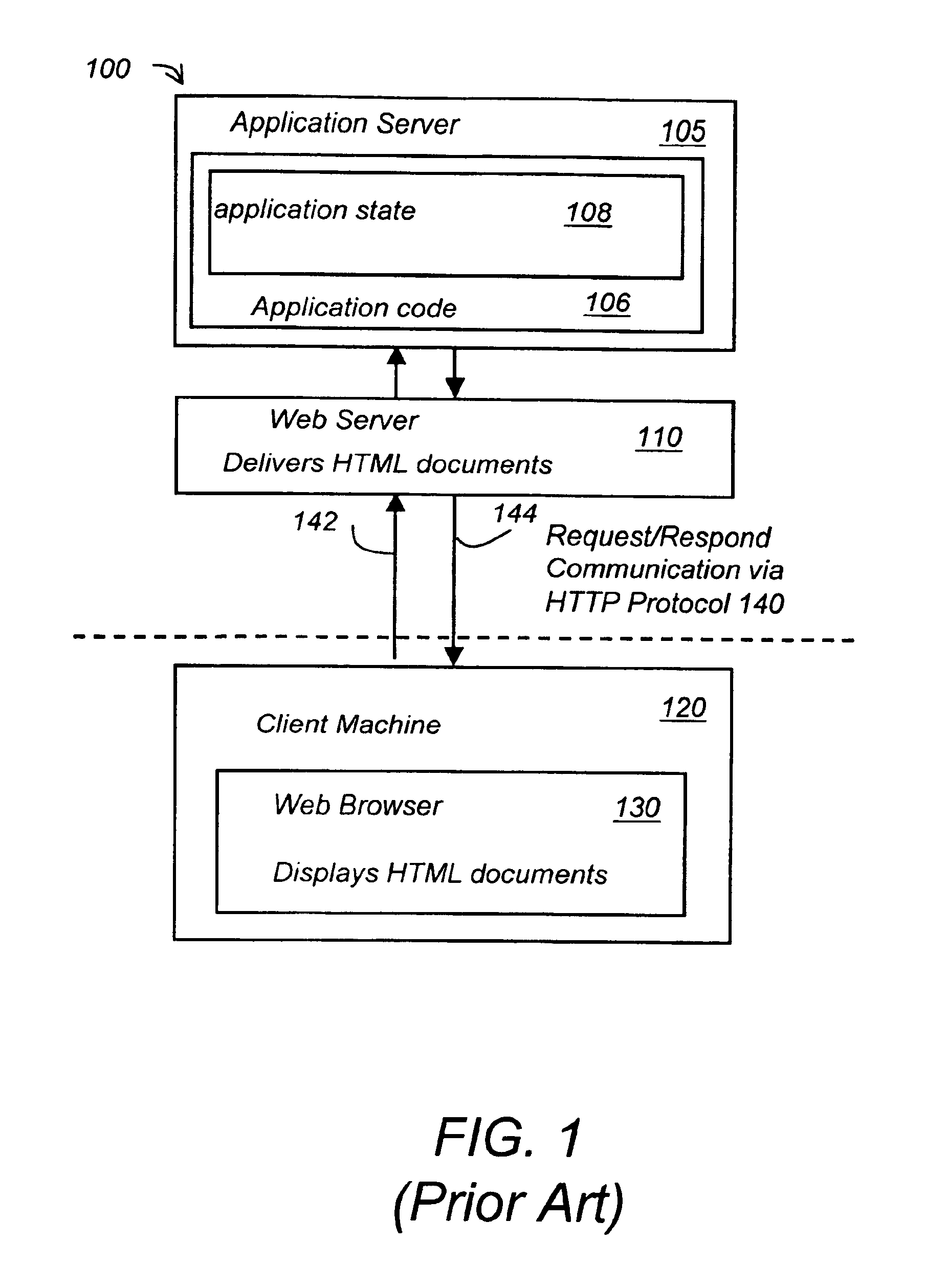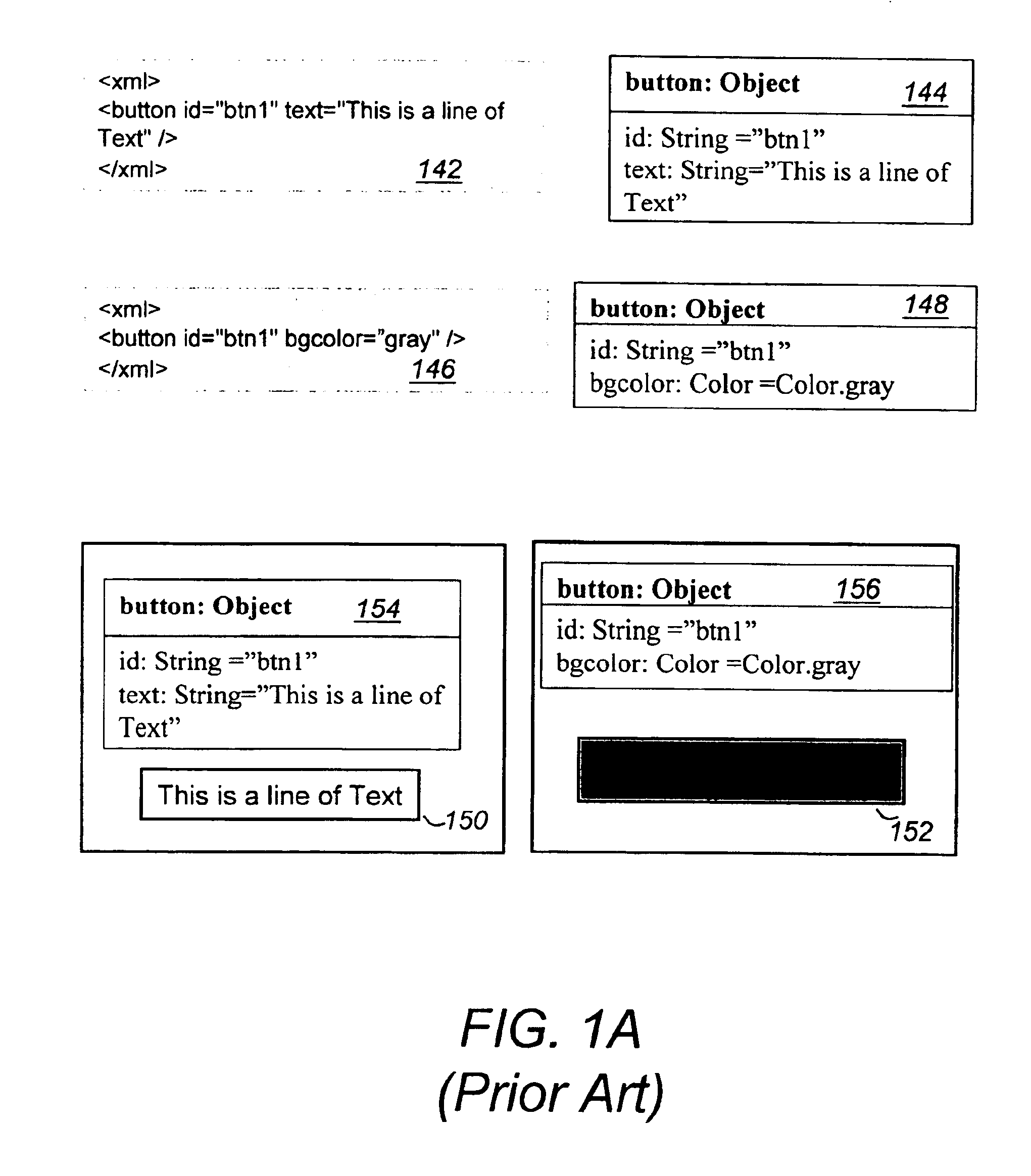System and method for stateful web-based computing
a web-based computing and stateful technology, applied in the field of system and a method for stateful web-based computing, can solve the problems of consuming a lot of network bandwidth for transmitting such documents, limiting the applicability of the web for delivering business applications, and increasing both the development cost and the application maintenance cost. , to achieve the effect of reducing the waiting tim
- Summary
- Abstract
- Description
- Claims
- Application Information
AI Technical Summary
Benefits of technology
Problems solved by technology
Method used
Image
Examples
Embodiment Construction
[0055]Referring to FIG. 2, a distributed computing system 700 includes a client machine 219, a web server 112 and an application server 105. The application server 105 runs behind the web server 112, and runs server side applications 106. The web server 112 delivers HTML or XML documents generated by the server side applications 106 to a client web browser 220 residing inside the client machine 219. A real time, bidirectional, reliable messaging system 240 transmits messages between the client web browser 220 and the web server 112 over an HTTP web connection. The client machine 219 includes a client runtime environment (CRE) 224 that runs inside the client web browser 220 and client side application code 222. In other embodiments the CRE runs outside the client web browser 220. The client side application code 222 includes Extensible Markup Language (XML) documents and script. The CRE 224 is protected by a client side firewall 244 and the web server 214 is protected by a server sid...
PUM
 Login to View More
Login to View More Abstract
Description
Claims
Application Information
 Login to View More
Login to View More - R&D
- Intellectual Property
- Life Sciences
- Materials
- Tech Scout
- Unparalleled Data Quality
- Higher Quality Content
- 60% Fewer Hallucinations
Browse by: Latest US Patents, China's latest patents, Technical Efficacy Thesaurus, Application Domain, Technology Topic, Popular Technical Reports.
© 2025 PatSnap. All rights reserved.Legal|Privacy policy|Modern Slavery Act Transparency Statement|Sitemap|About US| Contact US: help@patsnap.com



